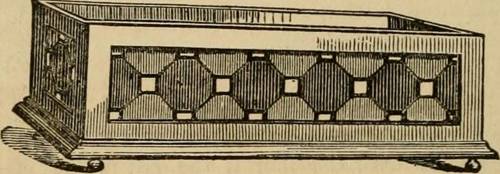
FAQ About Indoor Plant Water Absorption Rates

What factors affect the water absorption rate of indoor plants?
The water absorption rate of indoor plants is influenced by several factors, including the type of plant, soil composition, pot size, light exposure, humidity levels, and temperature. Different plant species have varying water needs based on their natural habitats. Soil with good drainage and aeration enables efficient water uptake, while poor lighting and low temperatures generally reduce the rate of water absorption.

How do I determine the water needs of my indoor plants?
To determine the water needs of your indoor plants, consider their species, size, and environmental conditions. Touch the soil to check its moisture level; if it's dry about an inch below the surface, it might be time to water. Monitoring the plant's appearance can also provide clues—wilting or yellowing may indicate a need for water.

Can underwatering affect the water absorption rate of indoor plants?
Yes, underwatering can affect the water absorption rate of indoor plants. Prolonged dryness can lead to root damage, reducing the plant's ability to absorb water efficiently. Over time, this can cause the plant to become stressed and may hinder its growth and health.

How does soil type impact water absorption in indoor plants?
Soil type significantly impacts water absorption in indoor plants. Well-draining soils, like loamy or sandy soils, promote good water flow and prevent waterlogging, enhancing absorption. In contrast, clay-heavy soils can retain water excessively, potentially leading to root rot due to inadequate oxygenation.

What role does humidity play in the water absorption rate of indoor plants?
Humidity plays a crucial role in the water absorption rate of indoor plants. High humidity can reduce the need for frequent watering as plants may absorb moisture from the air, leading to slower soil evaporation. Conversely, low humidity conditions increase transpiration rates, causing plants to lose water faster and requiring more frequent watering.

Does the size of the pot affect a plant's ability to absorb water?
The size of the pot can affect a plant's ability to absorb water. A pot that is too small may restrict root growth, limiting water uptake. Overly large pots can lead to water retention issues, making it difficult for roots to access oxygen and potentially leading to root rot.

How does temperature influence water absorption in indoor plants?
Temperature influences water absorption in indoor plants by affecting the rate of evaporation and the plant's metabolism. Warmer temperatures can increase evaporation, leading to faster drying of the soil and a higher demand for water. Conversely, cooler temperatures slow down these processes, reducing water requirements.

What are some signs that an indoor plant is not absorbing water properly?
Signs that an indoor plant is not absorbing water properly include wilting, yellowing leaves, stunted growth, and dry soil. Additionally, if water runs off the surface without sinking in, the plant may not be absorbing water efficiently, possibly due to compacted soil or root issues.

Can overwatering affect the water absorption rate of indoor plants?
Yes, overwatering can affect the water absorption rate of indoor plants. Excessive water can drown roots, depriving them of oxygen, leading to root rot. This damage can inhibit the roots' ability to absorb water properly, ironically causing the plant to exhibit symptoms of drought stress despite ample moisture.

How often should I water my indoor plants?
The frequency of watering your indoor plants depends on several factors such as plant type, pot size, soil type, and environmental conditions. Generally, most indoor plants prefer to dry out partially between waterings. It is best to check the top inch of the soil; if it feels dry, it's usually a good indication that watering is needed.

Do all indoor plants have the same water absorption rates?
No, not all indoor plants have the same water absorption rates. Different species have unique adaptations and needs. For example, tropical plants often have higher water requirements compared to succulents, which are adapted to arid conditions and can store water efficiently.

How does light exposure affect the water absorption rate in indoor plants?
Light exposure affects the water absorption rate in indoor plants as it influences their photosynthesis and transpiration processes. Plants in brighter light typically consume water faster due to increased photosynthetic activity, requiring more frequent watering than those in low-light conditions.

What is the best type of water for watering indoor plants to optimize absorption?
The best type of water for watering indoor plants is usually room-temperature and dechlorinated water. Tap water left to sit for 24 hours can be used to allow chlorine to dissipate, though rainwater or distilled water are often recommended for reducing mineral build-up that can affect soil and plant health.

Can I improve water absorption by adjusting the watering technique for indoor plants?
Yes, you can improve water absorption by adjusting the watering technique. Watering from below by allowing the plant to soak up water from a tray can ensure even distribution and prevent waterlogging. Additionally, watering early in the day allows plants to absorb water efficiently as temperatures rise.

Is there a connection between water absorption rate and plant growth rate?
Yes, there is a connection between water absorption rate and plant growth rate. Adequate water absorption ensures that plants receive necessary nutrients dissolved in the water, which are essential for growth. However, excess water can lead to root issues, stunting growth rather than promoting it.

How does the type of indoor plant influence its water absorption needs?
The type of indoor plant greatly influences its water absorption needs due to evolutionary adaptations. For example, cacti and succulents have evolved to store water for long periods, needing less frequent watering compared to tropical plants that thrive in moist environments and thus require more consistent hydration.

Are there tools to help me measure my indoor plant's water absorption rate?
Yes, there are tools available, such as moisture meters, which can help measure an indoor plant's water absorption rate by providing precise data on the moisture level in the soil. This allows for more accurate watering schedules, preventing both overwatering and underwatering.

What are some common mistakes that negatively impact water absorption in indoor plants?
Common mistakes that negatively impact water absorption include overwatering, using poor-draining soil, not acclimating plants to their environment, and failing to adjust watering schedules based on seasonal changes. Additionally, incorrect pot sizing can lead to waterlogging or inadequate water availability for root systems.

Does the method of pot drainage affect water absorption rates?
Yes, the method of pot drainage significantly affects water absorption rates. Pots with adequate drainage holes allow excess water to escape, preventing waterlogging and promoting healthy root absorption. Conversely, pots without proper drainage can lead to water stagnation, root rot, and reduced absorption efficiency.

How can I tell if a plant's water absorption rate is improving over time?
You can tell if a plant's water absorption rate is improving by observing positive changes such as new growth, vibrant leaf color, reduced wilting, and the soil remaining evenly moist rather than becoming waterlogged or overly dry. Using a moisture meter can also provide data on consistent moisture retention and root health.
